How to Find and Optimize Your SaaS Product's Most Important User Retention Flows
Retention is the #1 priority for SaaS platforms
For SaaS companies, 70-85% of revenue comes from renewals. It makes sense that one customer who keeps paying the subscription is going to be more of an asset — and cheaper to sustain — than a series of customers who churn every month.
The data backs that up: it’s 6-7x cheaper to keep an existing customer than it is to acquire a new one. All of the marketing and sales time that went into getting the conversion is wasted without good retention. That’s scary enough without considering the impact of churn on revenue, where a drop of just 2% in retention could mean half of your revenue if your long-term retention rate is 4%.
blog-optimizeyoursass-bookings
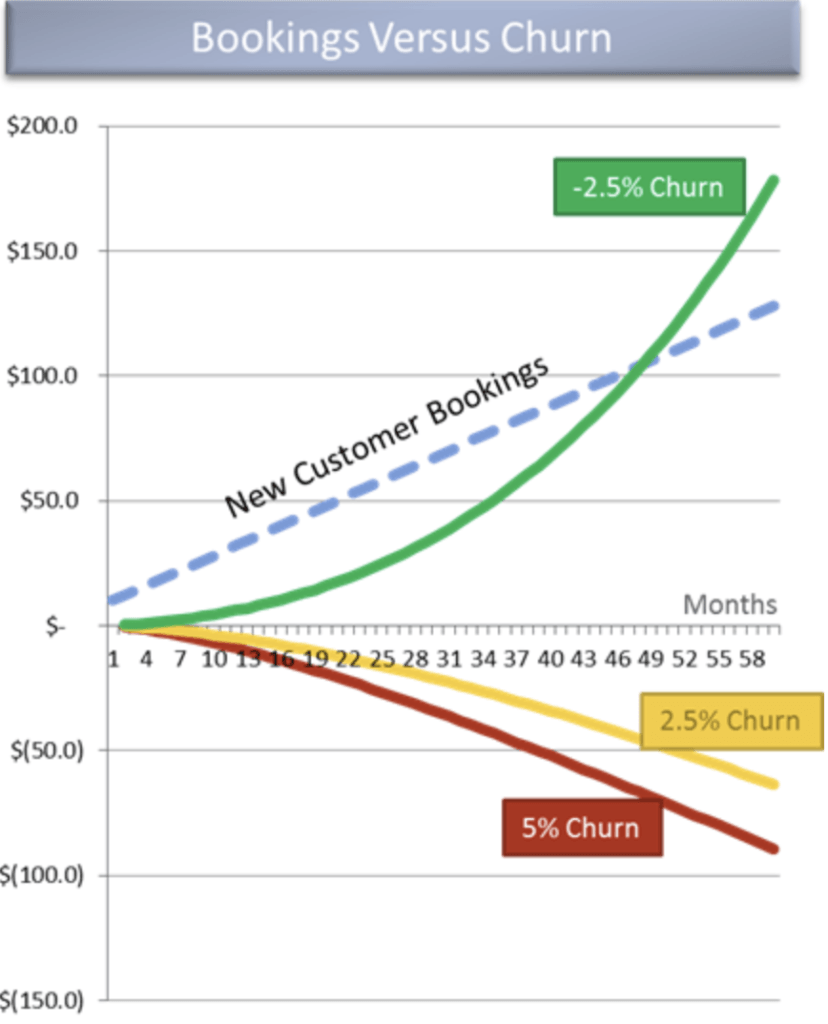
(Source)
Unlocking retention means unlocking revenue. But retention is 61% of companies’ most challenging obstacle.
How can you identify the key drivers of retention in your product and amplify their success? In this post, we look at using customer data to do just that.
Get 10 Winning Retention Strategies from PMs and Marketers
How your product’s magic numbers tell stories about retention
While exploring customer data, many smart product teams of times long past have found that there are some metrics that clearly impact retention more than others — metrics that indicate the user is moving towards their Aha Moment.
There are magic numbers that can be put into three categories for most SaaS products:
Network density (team members invited)
Content added (dashboards created, events defined, or files uploaded)
Visit frequency (logged in twice a day for 3 days)
Your customer data contains metrics attached to these events that you can dive deeper into to find commonalities between actions in your SaaS platform and what makes users stick around.
By optimizing for behavior that drives retention, you are directly improving your SaaS product’s ability to generate revenue.
Finding your SaaS product’s key retention drivers
As Richard Price said, often the biggest indicators that a user will stick around relate to the size of their network, ‘investment’ on how much content they’ve added, and their recurring login patterns.
With a platform like Heap, which collects every event that happens inside your product and website automatically, you can analyze the correlations between key events in your product and retention.
Chameleon, for example, is a product that helps non-technical teams design and deploy in-app tours, prompts, tooltips, and more. Some key indicators that a user is going to have a higher chance of retaining than another is when a user:
Creates a new product tour in Chameleon
Invites others from their team to the platform
Installs our Chrome extension
Essentially, these three events come into the network density and adding content categories of behavior that drives Aha Moments. They’re all investments in a user’s time and energy — a common hook B2C apps include in onboarding flows when having users write bios, upload profile photos, follow users, and more.
A correlation and causation caveat
blog-optimizeyoursass-bookings
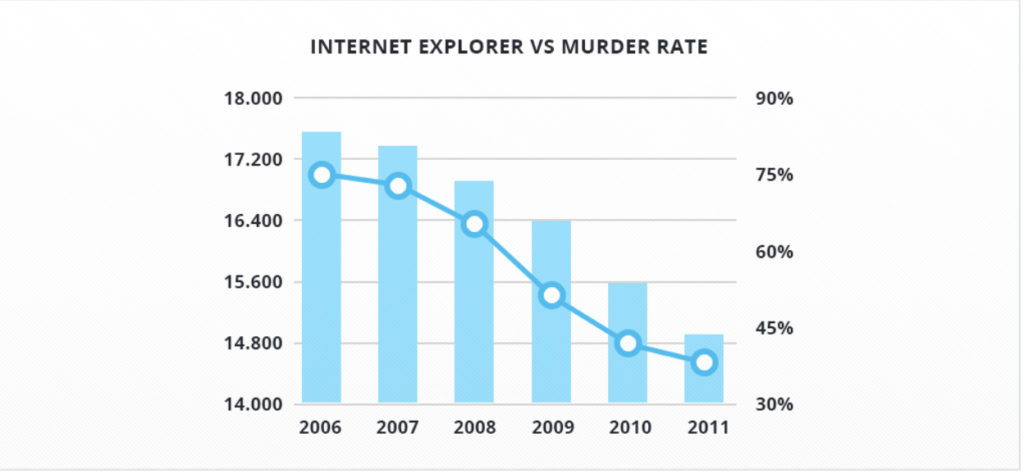
Don’t be fooled by accidental correlation!
It’s easy to get excited about the impact a certain event is having on something important. For example, you might find that users who find you through Twitter are more likely to hit their first moment of success with your software faster. To make sure this is a valid assumption, check if you’re doing anything differently on Twitter and drill down into the exact referral paths users took. If the sample size is small, it could simply be a false alarm.
So, after picking three events that I’d hypothesize have a correlation to user retention, I can use a customer data analytics tool like Heap to make the analysis.
Analyzing retention drivers in Heap
Since Heap collects every event on your platform automatically, after installing it you can explore the correlations between practically anything. In the tool, select the Retention option from the sidebar and choose two events.
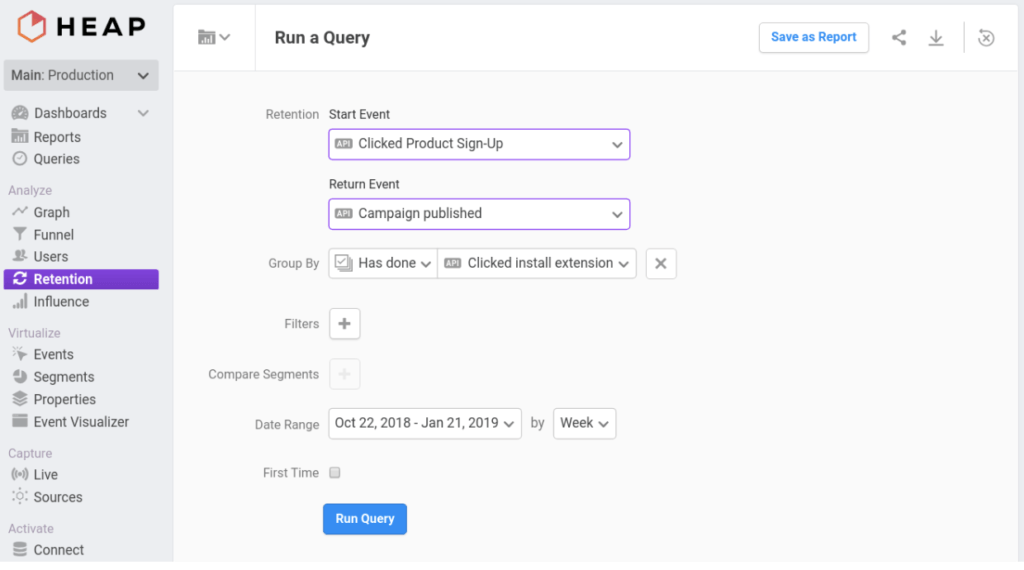
Here, I’ve gone with the start event being a user signing up. This filters out blog readers and others, since users can’t use the product any other way apart from signing up. Inside Chameleon, there’s a prompt to install the Chrome extension. The extension helps users more easily trial Chameleon on their sites and sandbox tours.

(Source)
We used this as the second event to include in the retention report. That’s because with Heap, we’ve discovered it could be a factor in retaining users:
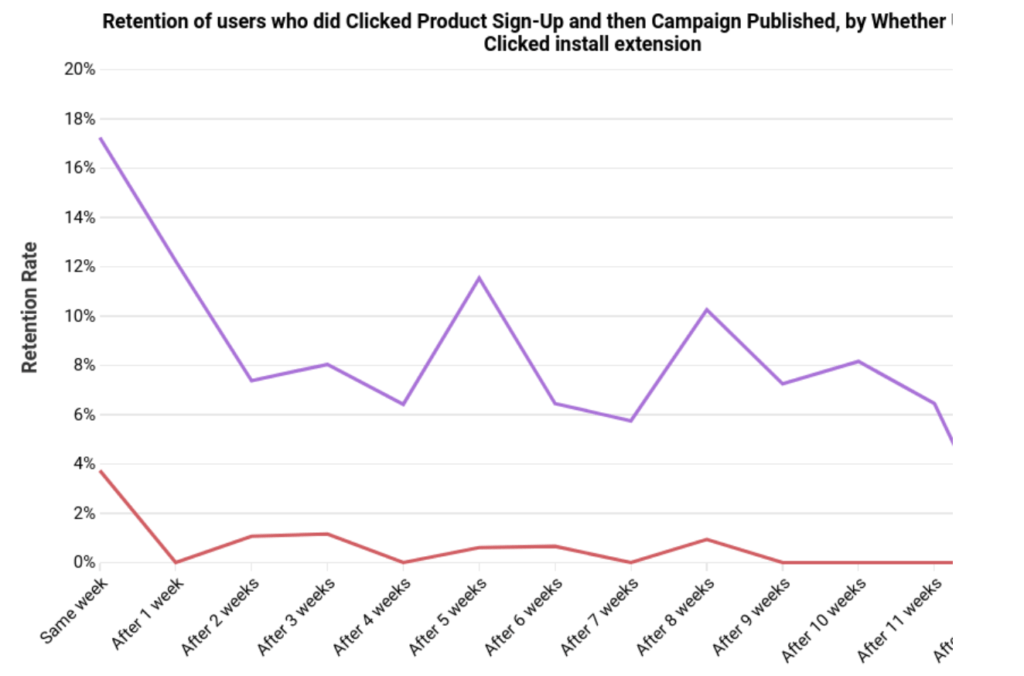
Users that installed the Chrome extension are around 10x more likely to still be around weeks later.
The same for the correlation between inviting a user and retaining:
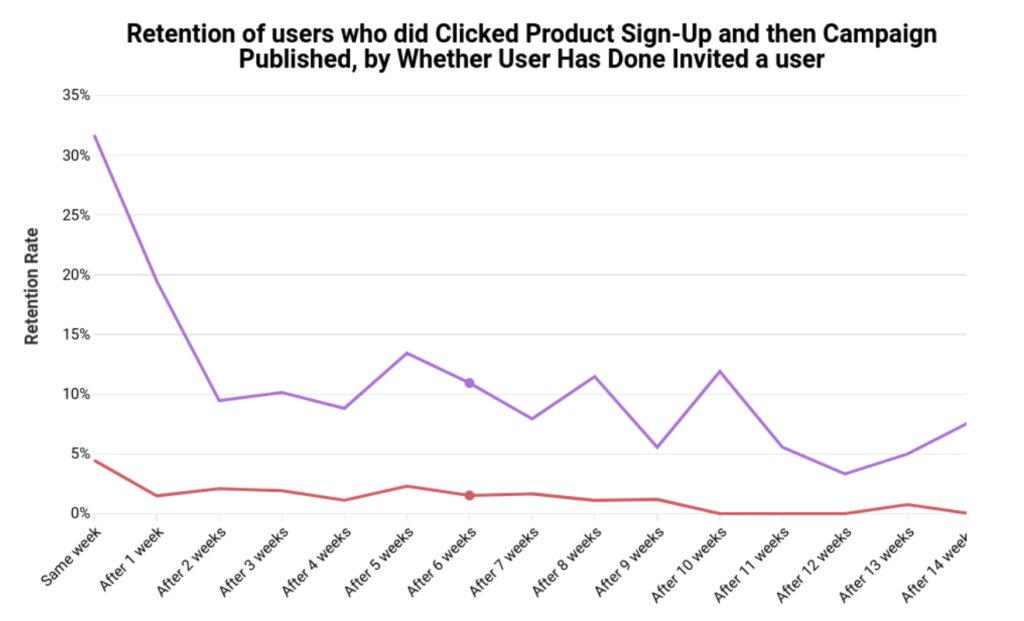
Looking at each chart is good for a visual overview, but by exporting the data to a CSV you can compare the relative impact of each event to decide which — if any — behavior should be promoted to users in an effort to boost retention.
Here, I’ve aggregated retention data from users that either installed the extension or invited a user, to compare which is a stronger driver of retention. The graph shows the Invited a user event has more impact on retention than Installed extension:
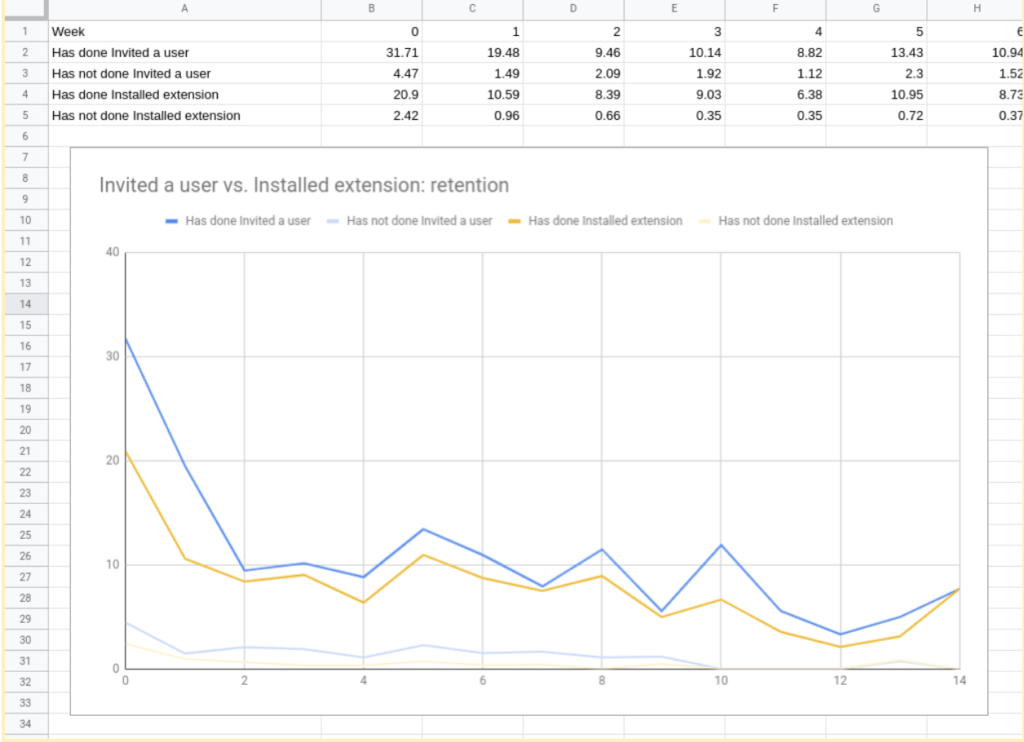
Explore your key metrics and indicators of engagement, and create your own reports to find your product’s essential factors for retention. With that data, you have the basis to make optimizations that (in our case) could up retention by 5-10x.
In short, you know what you need to prompt a user to do if you want to increase their chances of retention. Now, you need a plan for getting as many users to that point as possible.
Pushing for greater retention with in-product marketing
Organizations that ‘have well-designed user journeys that facilitate clear communication’ and a seamless transaction are 57% more likely to have significantly surpassed business goals
Many apps find that the biggest drop-off of retention happens after a very short amount of time — anywhere between the first day of usage to the first five minutes, depending on the kind of software.
On average, a mobile app loses 80% of its users after just one session. However, improvements to a user’s first minutes of use can drive a 50% increase in lifetime value — that’s because the user onboarding flow of your tool can make or break your success in retaining that vital few extra percent of users needed to make a huge impact on LTV.
Solutions to making the user’s first experience with your SaaS platform enjoyable include reducing the friction needed for a user to get to an Aha Moment. Maybe if you begin the onboarding flow with a 20-step form, you’ll find that making it less strict improves the number of users that actually make it through to the other side. But simply removing friction and chasing the holy grail of the “perfectly intuitive product” only takes you so far. Users need education about even simple products, delivered in-context, and based on usage data.
In fact, Moz found that in an A/B test that churn decreased by 10% for users that were shown onboarding tours versus those that weren’t. Since retention compounds a user’s lifetime value, a 10% reduction in churn can be far more than a 10% increase in revenue in the long run.
So, how can you deploy product tours that cut churn?
First of all, customer data analysis like I demonstrated earlier in the article will give you a pointer towards what action you should be encouraging your users to do. But simply instructing users to do a thing they otherwise weren’t planning on doing isn’t going to cut it. The way users learn and behave when inside your product is driven by what the benefit is for them.

(Source)
Each stage is an opportunity for churn, especially if the benefits of your product aren’t clear across each touchpoint.
Because of that, you should tie each feature tour, tooltip, or CTA to a clear benefit, like AngelList does in this product launch modal that explains the benefits of continuing and features to look out for:
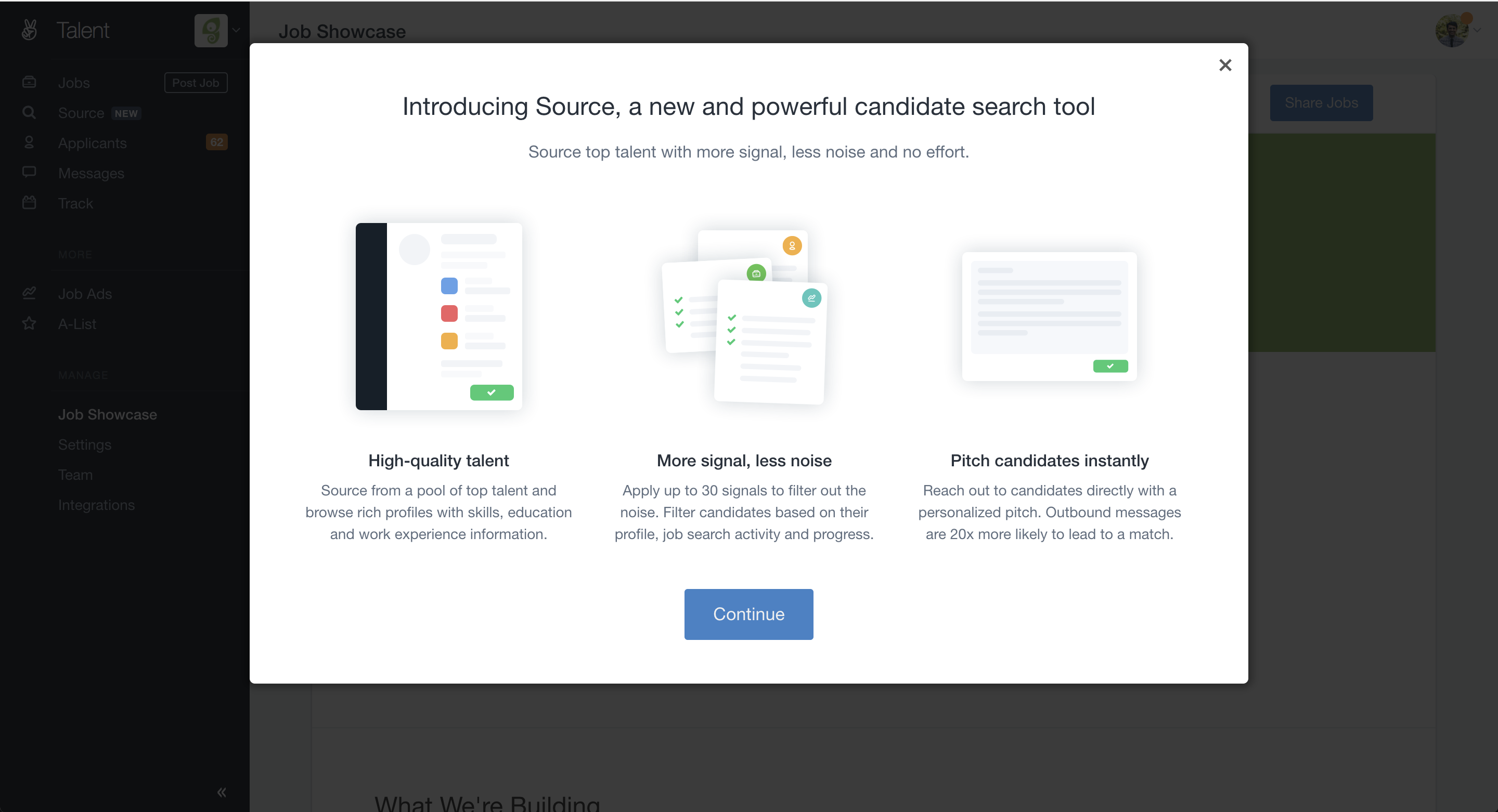
(Source)
You can build code-free product tours like the one above, along with tooltips and self-serve user guidance, with Chameleon.
Start analyzing product marketing performance with Heap
We’ve already seen how Heap makes it simple to see how any event in your SaaS product impacts retention, engagement, and other key metrics. But what about making active optimizations to the way you market to users in-app, and measuring the outcomes?
Heap’s integration with Chameleon means you can easily analyze the impact of any tooltips, tours, or prompts you deliver to users with the aim of boosting retention.
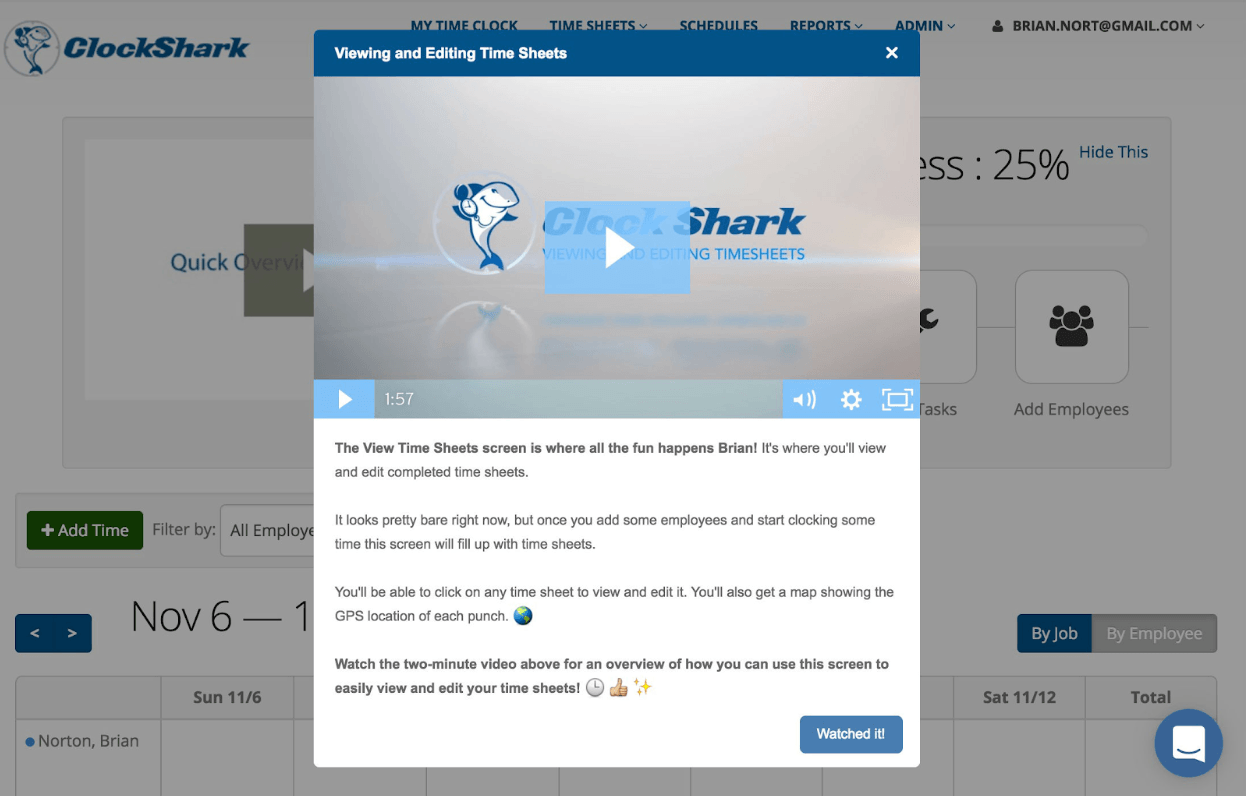
In-app marketing like this example above has been seen to improve retention by up to 50%. See for yourself when you feed Chameleon events into Heap, and track what in-product marketing can do you for.
Benjamin Brandall is a data-obsessed SaaS growth consultant who leads content marketing at Chameleon.
